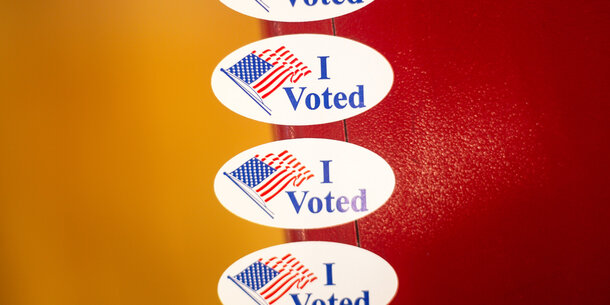Postmarks are the primary evidence election officials use to verify the date a ballot was cast in states that accept ballots that arrive after Election Day. Yet postmarks are not always reliably stamped on ballot envelopes, putting some voters at risk of disenfranchisement unless election officials use alternative methods of verifying the date.
In these highly charged times, where impropriety is routinely proclaimed, we are sure to hear baseless allegations that late arriving ballots without a postmark are proof of fraud. It is important to understand, especially as the use of mail ballots surges, that ballots arriving after Election Day without a postmark are not suspicious. Every effort should be made to verify they were timely cast and count them.
Postmarks will play a role in almost half of states this year. In 23 states and the District of Columbia, ballots are accepted after Election Day as long as election officials verify they were cast on or before Election Day. That includes 19 states that allow ballots cast by Election Day and four states (Iowa, North Dakota, Ohio, Utah) that accept ballots cast by the Monday before the election. Additionally, Utah and Arkansas require all mailed ballots to have a postmark even if they arrive by Election Day.
In nearly all of these states, the relevant rules or statutes specifically reference postmarks being used to determine when the ballot was cast. When postmarks are missing or illegible, it can lead to election officials not being able count ballots. For example, in the Wisconsin and New York primaries this year, there were widespread reports of ballots missing postmarks. Many of those ballots were not counted in Wisconsin, while some were counted in New York City thanks to a lawsuit on behalf of voters.
While postmarks factor into determining which votes get counted, it’s worth remembering that this is not what they were not designed for. In fact, postmarks were designed simply to prevent the reuse of stamps, not as a ballot validation system. Not all mail is required to receive a postmark, though to address the problems that arose in the primary, the Postal Service has reissued guidelines that all returned ballots be postmarked. Yet in August, an internal audit found that all ballots were still not getting postmarked.
The USPS inspector general identified a number of common reasons that missing postmarks happen, including envelopes sticking together when processed on a machine and personnel simply being unaware that all returned ballots, even those in prepaid reply envelopes, need to receive a postmark.
Considering the high volume of election mail the post office is dealing with and the operational changes and reversals this year, errors are inevitable. So if a voter’s ballot is cast on time and arrives before the deadline, election officials should do everything within their discretion to try to count those ballots.
At least 10 states (California, Illinois, Maryland, Minnesota, Nevada, New Jersey, New York, Pennsylvania, Washington and West Virginia) accept ballots with missing or illegible postmarks that arrive after Election Day.
There are ways for election officials to verify that a ballot was cast by Election Day, even if it arrives without a legible postmark. For example, most states use bar codes that encode tracking information directly on ballot envelopes. Those systems can be used to help determine when a ballot was returned to a post office.
Election officials can also coordinate with post offices to try to determine when a particular batch of mail with missing postmarks was picked up. And election officials can even rely on the date a voter writes on their envelope as evidence a ballot was cast on time.
Voting by mail has allowed millions of Americans to vote safely this year, and the lack of a postmark shouldn’t stand in the way of the right to vote.





